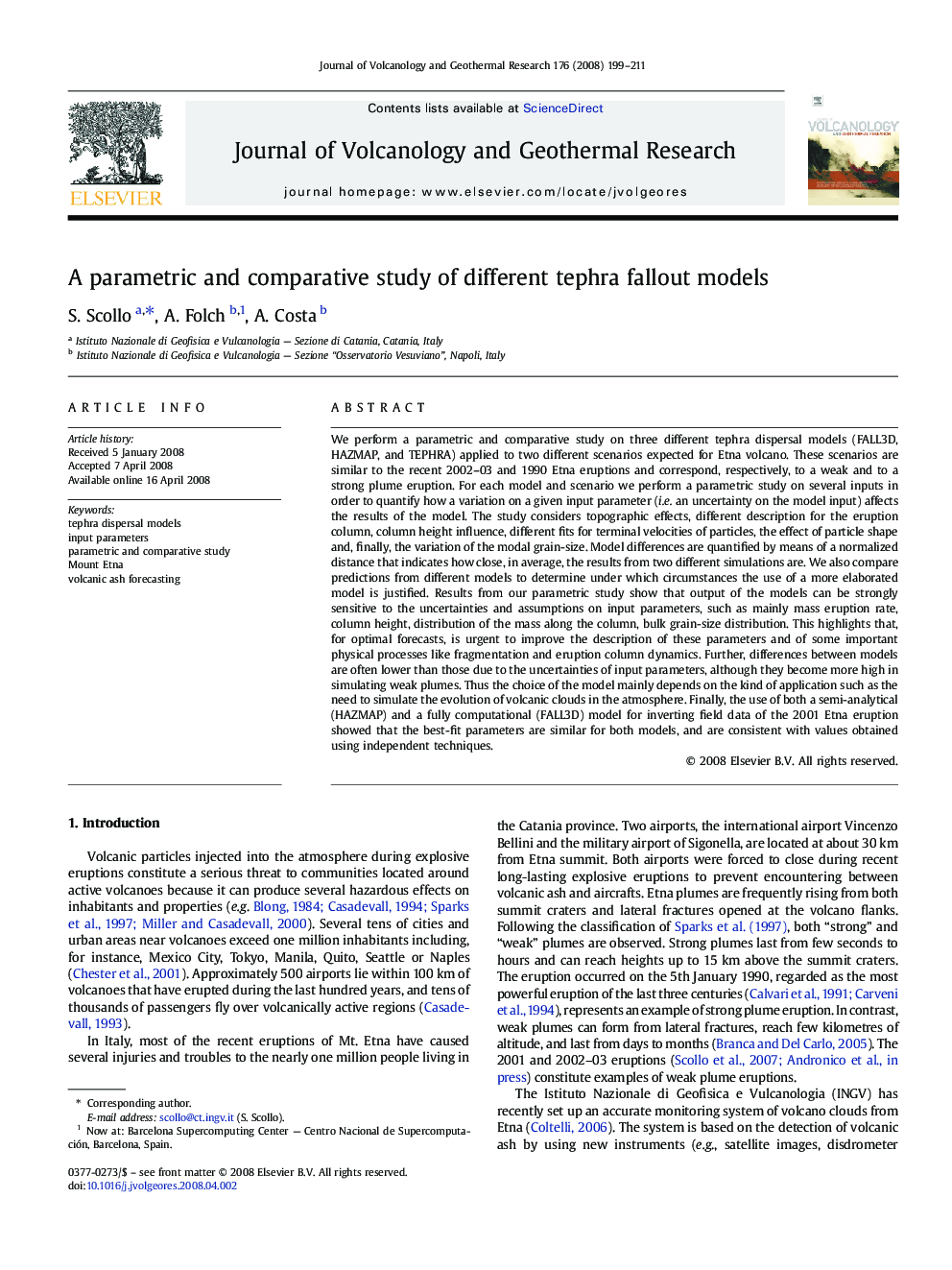| کد مقاله | کد نشریه | سال انتشار | مقاله انگلیسی | نسخه تمام متن |
|---|---|---|---|---|
| 4715264 | 1354088 | 2008 | 13 صفحه PDF | دانلود رایگان |

We perform a parametric and comparative study on three different tephra dispersal models (FALL3D, HAZMAP, and TEPHRA) applied to two different scenarios expected for Etna volcano. These scenarios are similar to the recent 2002–03 and 1990 Etna eruptions and correspond, respectively, to a weak and to a strong plume eruption. For each model and scenario we perform a parametric study on several inputs in order to quantify how a variation on a given input parameter (i.e. an uncertainty on the model input) affects the results of the model. The study considers topographic effects, different description for the eruption column, column height influence, different fits for terminal velocities of particles, the effect of particle shape and, finally, the variation of the modal grain-size. Model differences are quantified by means of a normalized distance that indicates how close, in average, the results from two different simulations are. We also compare predictions from different models to determine under which circumstances the use of a more elaborated model is justified. Results from our parametric study show that output of the models can be strongly sensitive to the uncertainties and assumptions on input parameters, such as mainly mass eruption rate, column height, distribution of the mass along the column, bulk grain-size distribution. This highlights that, for optimal forecasts, is urgent to improve the description of these parameters and of some important physical processes like fragmentation and eruption column dynamics. Further, differences between models are often lower than those due to the uncertainties of input parameters, although they become more high in simulating weak plumes. Thus the choice of the model mainly depends on the kind of application such as the need to simulate the evolution of volcanic clouds in the atmosphere. Finally, the use of both a semi-analytical (HAZMAP) and a fully computational (FALL3D) model for inverting field data of the 2001 Etna eruption showed that the best-fit parameters are similar for both models, and are consistent with values obtained using independent techniques.
Journal: Journal of Volcanology and Geothermal Research - Volume 176, Issue 2, 20 September 2008, Pages 199–211